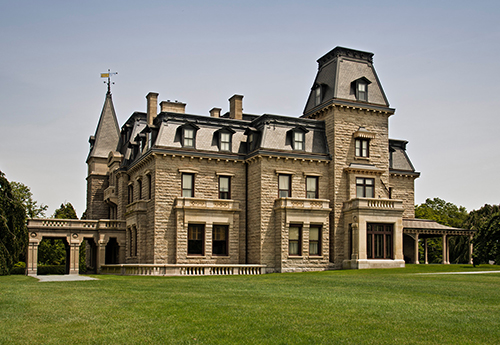By Abigail Howe Stewart
NEWPORT, R.I. – Château-sur-Mer, though smaller than its Bellevue Avenue neighbors, was Newport’s first Nineteenth Century mansion. Before its construction, Newport was known for understated wooden cottages, appropriate for a New England seaside retreat. Château-sur-Mer stood out, adding Newport’s first ballroom and incorporating European influences, ushering in a new era of grandeur that would propel the sleepy resort town into the Gilded Age.
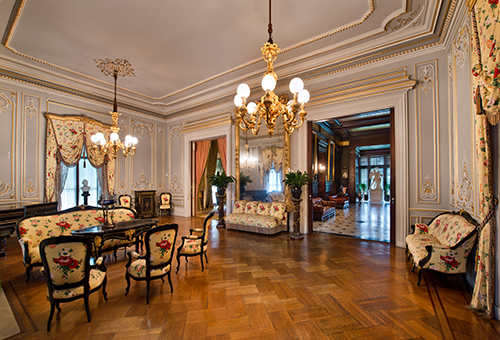
The ballroom is decorated in warm colors and boasts plaster decoration and fine crystal chandeliers. It is one of the few rooms that Hunt did not redo.
In 1851, William Shepard Wetmore commissioned Seth Bradford, a local contractor, to build his family’s year-round home. The original Château-sur-Mer, an imposing Italianate structure built of Fall River granite, sat on 40 acres of land with unimpeded views of the cliffs and ocean. Wetmore gained his fortune as an international merchant and eventually established his own company in Canton, where he profited greatly from the 1830s China Trade. Château-sur-Mer reflected his elevated position in society and, in 1854, he hosted the first of Newport’s legendary parties, a Fête Champêtre attended by 2,500 guests.
Upon his death in 1862, Wetmore left his estate to his two surviving children: 16-year-old George Peabody and his sister Annie. They continued to live at Château-sur-Mer with a sizable staff. George went on to attend Yale and Columbia Law School, and in 1869, at 23, he married Edith Malvina Keteltas of New York. After inheriting her share of the property, Annie married William Watts Sherman, whose H.H. Richardson-designed house (owned by Salve Regina University) sits on a parcel of original Wetmore land.
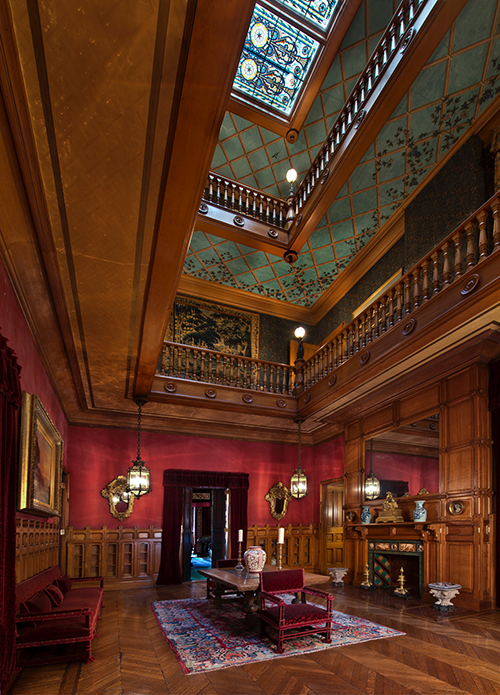
The centerpiece of the house has to be the three-story Great Hall that has a 45-foot ceiling and broad balconies.
The Wetmores, as members of the social elite, frequently traveled to Europe, becoming aware of contemporary stylistic trends, like “Japonisme,” Italian Renaissance Revival and the English Aesthetic movement. Inspired by what they saw, the Wetmores hired Richard Morris Hunt, the first American trained at the Ecole des Beaux-Arts, to update and expand the house.
Under Hunt, Château became fashionably Second Empire, with the addition of a steep mansard roof, and a new porte-cochère featured Neo-Grec ornamentation. The interiors and furnishings largely followed the styles of William Morris and Charles Eastlake, but the library and dining room were Italian Renaissance-inspired, fashioned by Luigi Frullini, the famed Italian woodcarver. While Frullini worked for important clients throughout Europe and the United States, the two rooms at Château-sur-Mer are the most intact examples of his work that survive.
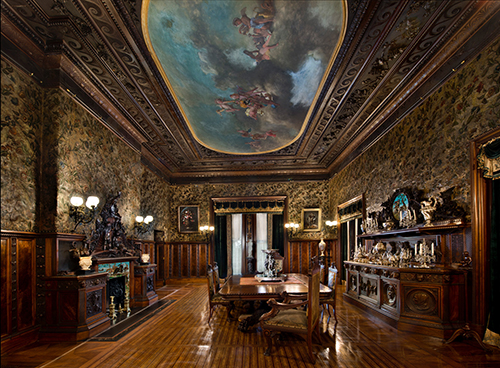
The dining room is one of two rooms with carved woodwork and furnishings by Italian designer Luigi Frullini.
Château-sur-Mer exemplifies wealth and style in the Victorian age and showcases a sustaining family legacy. George P. Wetmore went on to become governor of Rhode Island and a highly influential three-term US senator. Upon his death in 1921, his daughters Edith and Maud inherited and preserved their father’s house, while updating a few bedrooms as concessions to Twentieth Century taste. The Preservation Society of Newport County acquired the house in 1969 and, having largely returned the house to its pre-World War I appearance, continues to emphasize its role as the first of the great Gilded Age Newport mansions.
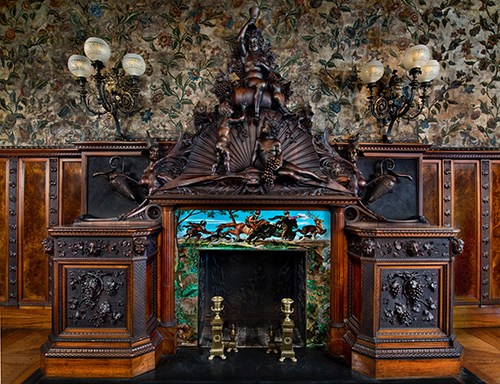
A highlight of high Victorian style, this heavily carved and ornate fireplace kept many a guest warm in the home’s dining room.
Château-sur-Mer, 474 Bellevue Avenue, is open to November 20, when it closes for winter. For more information, www.newportmansions.org or 401-847-1000.
Abigail Howe Stewart is research and interpretation coordinator for the Preservation Society of Newport County.

